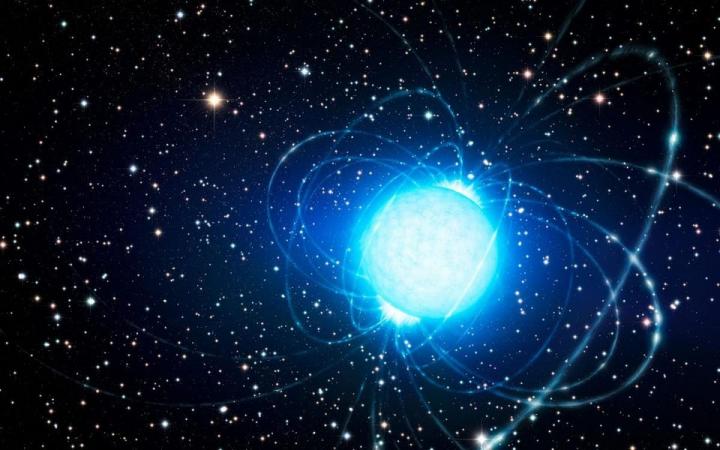Scientists find tiny mountains on neutron stars that are a fraction of a millimetre tall
Neutron stars are nearly perfect spheres due to their huge gravitational pressure, but the mountains on the cosmic objects can create rippling waves through spacetime

Your support helps us to tell the story
From reproductive rights to climate change to Big Tech, The Independent is on the ground when the story is developing. Whether it's investigating the financials of Elon Musk's pro-Trump PAC or producing our latest documentary, 'The A Word', which shines a light on the American women fighting for reproductive rights, we know how important it is to parse out the facts from the messaging.
At such a critical moment in US history, we need reporters on the ground. Your donation allows us to keep sending journalists to speak to both sides of the story.
The Independent is trusted by Americans across the entire political spectrum. And unlike many other quality news outlets, we choose not to lock Americans out of our reporting and analysis with paywalls. We believe quality journalism should be available to everyone, paid for by those who can afford it.
Your support makes all the difference.Neutron stars have mountains that are only a fraction of a millimetre high due to their extreme density, according to a new scientific model.
The stars are some of the densest objects in the universe, weighing as much as the Sun while only being around 10 kilometres wide.
Neutron stars are formed when a massive star runs out of fuel and collapses, with every proton and electron in the object forming a neutron – a neutrally charged subatomic particle.
If the star is between one and three times the mass of our Sun, then it will turn into one of these dense stars; anything greater than that will continue to collapse until they eventually form black holes.
The gravitational forces on a neutron star are about one billion times greater than those on Earth, which compresses every feature on the surface down to tiny dimensions – creating an almost perfect sphere.
However, on the surface of this sphere are minor imperfections, known as ‘mountains’.
"For the past two decades, there has been much interest in understanding how large these mountains can be before the crust of the neutron star breaks, and the mountain can no longer be supported”, Southampton University PhD student Fabian Gittins, who built a computational model to depict and study neutron stars, said in a statement.
The largest mountains possible to produce in this mathematical model were only one fraction of a millimetre tall, one hundred times smaller than was previously estimated.
Past work suggests that neutron stars can deviate from their perfect spherical shape with a margin of a few parts in a million, suggesting that mountains as large as a few centimetres could be possible, but this new data shows that this is impossible as the crust would be too close to breaking at every point.
"These results show how neutron stars truly are remarkably spherical objects. Additionally, they suggest that observing gravitational waves from rotating neutron stars may be even more challenging than previously thought,” Gittins said.
Understanding these slight deformations is vital to physicists hoping to garner a better understanding of our universe. Spinning neutron stars cause ripples in the fabric of spacetime known as gravitational waves, started from these slight imperfections.
These gravitational waves have yet to be observed, but future advances in more sensitive scientific equipment at the Ligo (Laser Interferometer Gravitational-Wave Observatory) and Virgo observatories could prove astounding results.
These observatories have already found astounding phenomena, including a black hole swallowing a neutron star for the first time, and the violent merging of two huge black holes in deep space.
Join our commenting forum
Join thought-provoking conversations, follow other Independent readers and see their replies
Comments